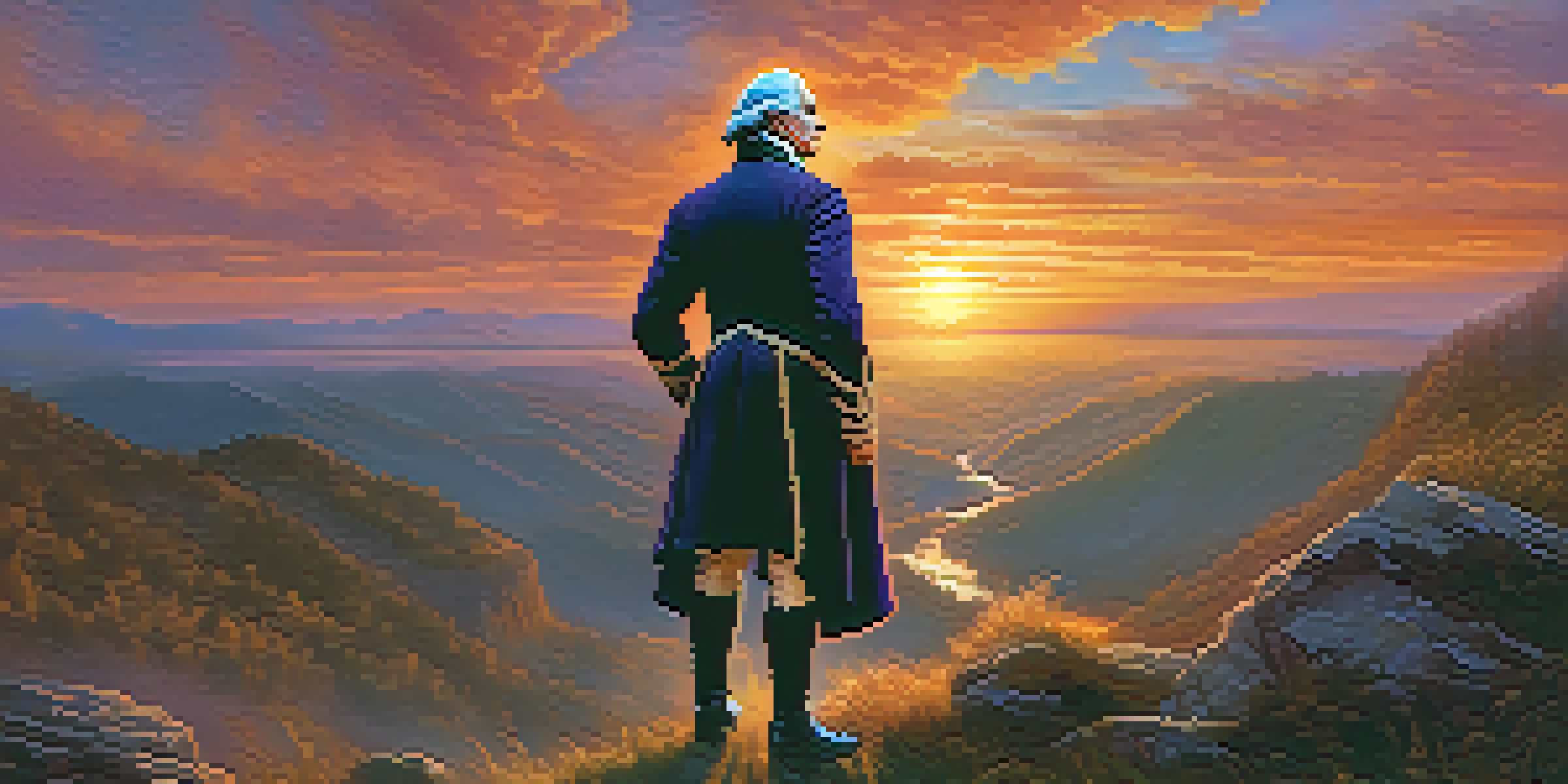How Hollywood Portrays Historical Figures: Heroes or Villains?

The Thin Line Between Heroism and Villainy
Hollywood often walks a fine line between portraying historical figures as heroes or villains. This duality can shape public perception, impacting how we view these individuals in real life. For instance, take Alexander Hamilton; the musical made him a hero, while other portrayals focus on his political rivalries and personal flaws.
History is written by the victors.
The choice to depict a character as a hero or villain frequently depends on the narrative arc filmmakers wish to create. This can lead to an oversimplification of complex historical figures, reducing their lives to mere archetypes. This simplification not only affects the audience's understanding but also influences educational narratives.
In essence, Hollywood's portrayal can turn historical truth into compelling fiction, making us question what we truly know about these figures. By exploring these narratives, we can gain insight into our own values and biases, reflecting on why we might prefer heroes over villains—or vice versa.
The Impact of Cultural Context on Portrayal
Cultural context plays a crucial role in how historical figures are portrayed in films. For example, during times of national pride, figures like George Washington are often depicted as flawless heroes. Conversely, in periods of social unrest, those same figures may be scrutinized and presented as flawed characters, shifting the narrative dramatically.

This shift in portrayal can lead to a reevaluation of historical figures based on contemporary values. What was once considered heroic may be viewed through a lens of criticism today, as seen in films addressing colonialism or civil rights. The impact of these portrayals can foster important discussions about morality and ethics in both history and modern society.
Heroism vs. Villainy in Film
Hollywood often simplifies complex historical figures into archetypes of heroism or villainy, influencing public perception and educational narratives.
Understanding this context allows viewers to recognize why certain portrayals resonate while others might offend. It encourages us to question not just the figures themselves but the narratives we choose to embrace, ultimately shaping our national identity.
The Role of Artistic License in Storytelling
Artistic license is a powerful tool in filmmaking, allowing creators to take liberties with historical facts for dramatic effect. This can lead to compelling storytelling but often at the expense of accuracy. For instance, films may exaggerate a villain's traits to make the story more engaging, leaving viewers with a skewed understanding of the real person.
The past is never dead. It's not even past.
While dramatization can enhance entertainment value, it can also lead to misconceptions about history. The line between fact and fiction becomes blurred, making it difficult for audiences to discern the truth. As a result, viewers may form opinions based on these portrayals rather than actual historical evidence.
In this sense, it's crucial for audiences to approach historical films with a critical eye. Engaging with supplementary materials, such as books or documentaries, can provide a more balanced view, enriching our understanding of these complex figures and their stories.
The Influence of Audience Expectations
Audience expectations significantly influence how historical figures are depicted in films. Viewers often come with preconceived notions shaped by culture, education, and previous media exposure. Filmmakers are acutely aware of these expectations and may cater their portrayals to meet audience desires for heroism or villainy.
For instance, films about World War II often cast figures like Winston Churchill as steadfast heroes. This portrayal aligns with the audience's desire for uplifting narratives in the face of adversity. However, this can overshadow the complexities of their decisions and actions during the war.
Cultural Context Matters
The portrayal of historical figures can change dramatically based on cultural context, reflecting contemporary values and encouraging discussions about morality.
This phenomenon raises important questions about storytelling and representation. Are filmmakers reinforcing stereotypes, or are they challenging audiences to think deeper? Understanding this dynamic encourages viewers to analyze not just the films but their own beliefs about these historical figures.
The Consequences of Misrepresentation
Misrepresentation in Hollywood can have lasting consequences on public perception and historical understanding. When a film inaccurately depicts a historical figure, it can skew the audience's perception for generations. For example, the villainization of figures like Cleopatra has led to a narrow understanding of her reign and impact.
These portrayals can propagate stereotypes and biases, influencing how we view entire cultures or historical periods. If Hollywood presents a one-dimensional view of a historical figure, it risks reinforcing harmful narratives that can affect social attitudes long after the credits roll.
To combat this, it’s essential for filmmakers to strive for accuracy and depth in their portrayals. By doing so, they not only honor the complexity of history but also provide a richer, more nuanced perspective for audiences to engage with.
The Role of Documentaries in Balancing Narratives
Documentaries play a critical role in providing a counterbalance to Hollywood's dramatized portrayals of historical figures. These films often focus on factual accuracy, offering viewers a chance to see the real stories behind the myths. By presenting interviews, historical documents, and expert analyses, documentaries can shed light on the complexities that Hollywood often glosses over.
For instance, a documentary about the life of Marie Antoinette would explore not just her extravagant lifestyle but also the political pressures she faced. This deeper dive helps audiences understand her actions within context, rather than simply labeling her as a villain.
Documentaries vs. Dramatizations
Documentaries provide factual counterbalances to Hollywood's dramatizations, helping audiences understand the complexities of historical figures and their true stories.
In this way, documentaries serve as a valuable educational resource, allowing viewers to engage critically with history. They encourage us to question Hollywood’s narratives and seek a more rounded understanding of the figures who shaped our world.
The Future of Historical Portrayals in Film
As society evolves, so too does the portrayal of historical figures in film. New voices and perspectives are emerging, leading to more diverse and nuanced representations. For example, recent films have begun to focus on underrepresented figures in history, highlighting their contributions and challenges.
This shift not only enriches our understanding of history but also allows for a more inclusive narrative that resonates with broader audiences. By showcasing a variety of experiences, filmmakers can challenge traditional notions of heroism and villainy, reflecting the complexities of human nature.

Looking forward, it will be exciting to see how these changes shape the stories we tell about our past. As audiences demand more authenticity and representation, filmmakers have the opportunity to create a richer tapestry of historical narratives that honor all voices.